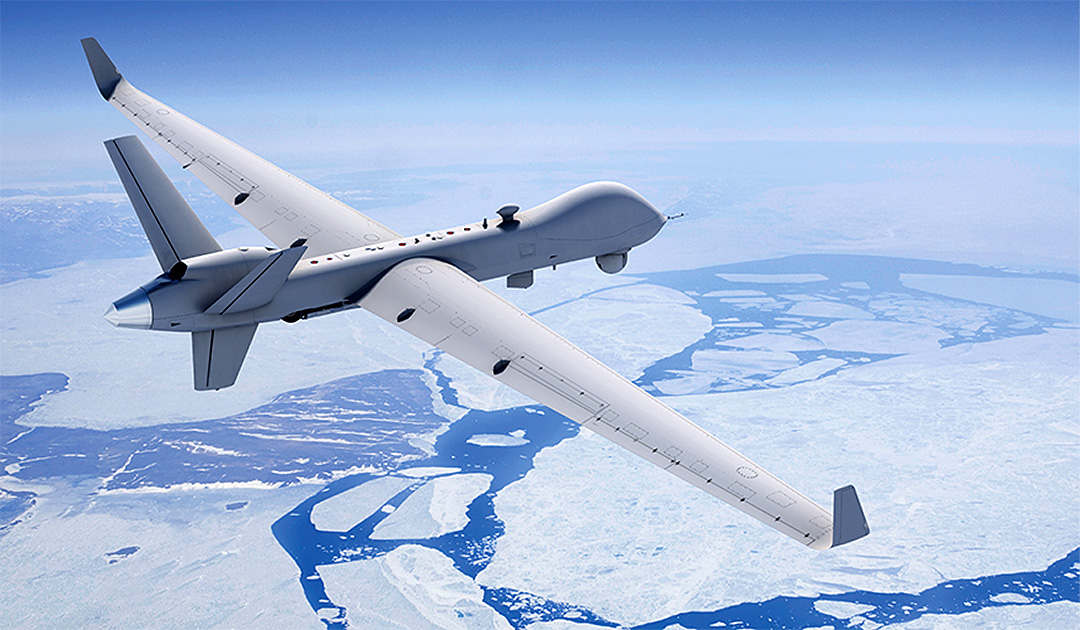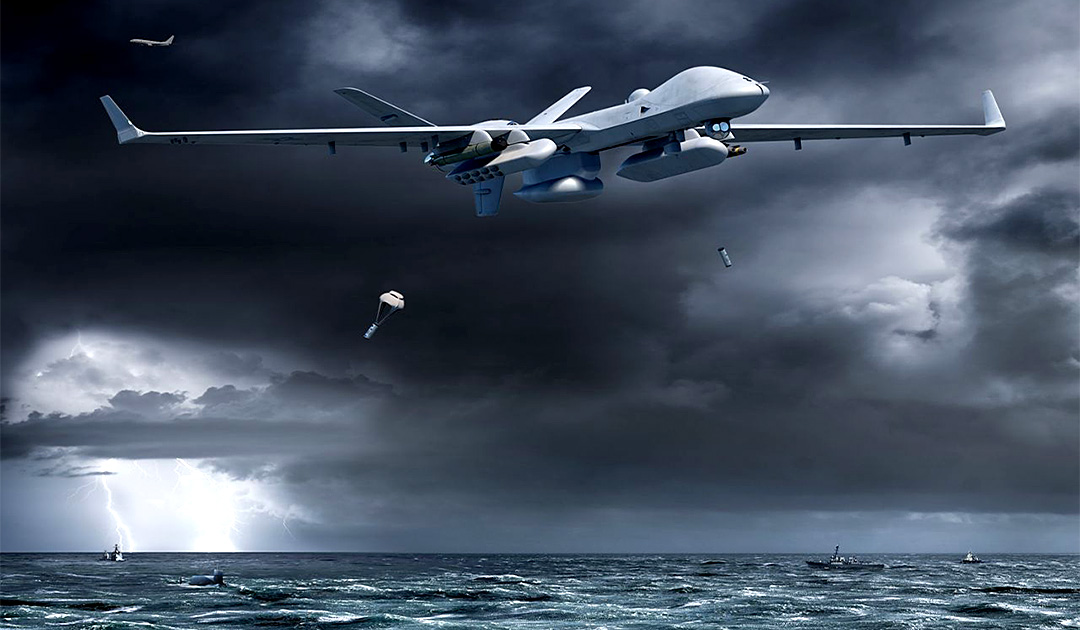
The remote-controlled drone MQ-9B Reaper of the US company General Atomics has reached northern latitudes of the Arctic during a test flight, paving the way for future security and surveillance missions in the Arctic regions. This was reported in September by the General Atomics press office.
The MQ-9B “Big Wing” configured drone has a wingspan of 24 meters (79 feet) and a length of 11.7 meters (38 feet). Its maximum mission duration is up to 43 hours. The test flight was the first time the drone flew north over the 78th parallel. The Reaper took off on September 7 from a company flight and training test center in Grand Forks, North Dakota, flew over Haig-Thomas Island in the Canadian Arctic, and returned on September 8.

“The flight was not only one of the longest ever completed by an MQ-9 drone, but also demonstrated the unmanned aircraft system’s new capabilities for security and surveillance missions in Arctic regions,” said C. Mark Brinkley, a spokesman for General Atomics.
“We have now proven that our drone can operate safely in Arctic regions over land and sea where effective command and control and data transmission have not been possible before“, Brinkley noted in an interview.
The Arctic is an area of growing strategic importance to the Pentagon as China and Russia increase military investments in the region.

First time in Arctic regions
Unmanned systems typically cannot fly above the Arctic Circle because older connections to satellite links are unstable at those latitudes, Brinkley noted. The farther north or south a drone flies, the worse the connection to the ground control station becomes.
To strengthen the MQ-9 drone’s connectivity while flying at these latitudes, General Atomics used the L-Band Airborne Intelligence, Surveillance and Reconnaissance (LAISR) service developed by Inmarsat.
“What makes LAISR special is that it is very insensitive to these atmospheric effects,” Inmarsat President Steve Gizinski said in an interview. LAISR uses a low satellite frequency that is less susceptible to interruptions and also uses an antenna with a wider beamwidth. This allowed General Atomics to maintain connectivity with the drone during its 25-hour flight during the test flight covering a distance of 7,250 kilometers (4,500 miles).

General Atomics MQ-9 Reaper mainly for military purposes
The MQ-9 drone was developed primarily for military purposes. With its high payload, the unmanned combat aircraft can be armed with up to 2,200 kilograms. The first flight took place on February 2, 2001. The drone has been in series production since 2006, and about 300 units have rolled off the assembly line in the meantime. It has been delivered to various countries.
The further development MQ-9B had its maiden flight on March 20, 2020. It is to be built in the “Sky Guardian” and “Sea Guardian” versions. Compared with the original Reaper, the B version represents a complete new development in order to obtain certification for international airspace.
Meanwhile, General Atomics is also conducting demos in Europe, where it has flown the “MQ-9B Sea Guardian” drone from England to the Netherlands and Scotland, Brinkley said.
Heiner Kubny, PolarJournal





